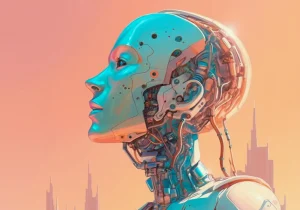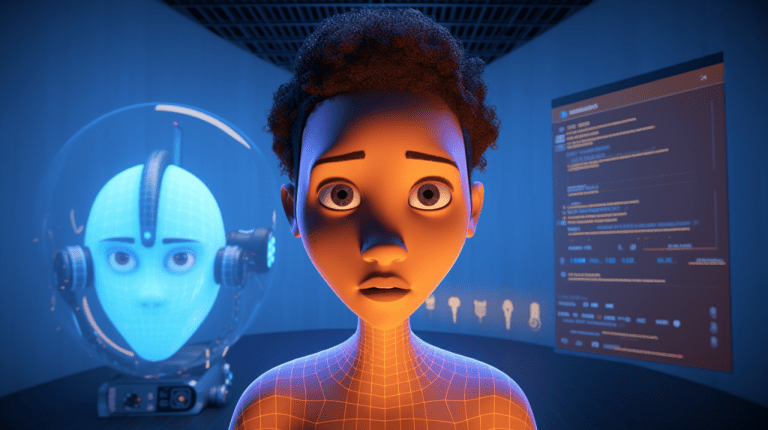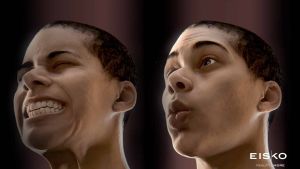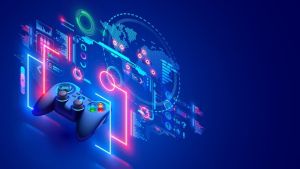The animation industry has come a long way from hand-drawn sketches to digital masterpieces. With the advent of Artificial Intelligence (AI), the industry is poised for another revolutionary leap. AI is not just a buzzword; it is a powerful tool that is transforming how animations are created and experienced. This blog explores the various facets of AI in animation, its applications, benefits, and the ongoing debate about its impact on animators’ jobs.
1. Evolution of the Animation Industry
Historical Perspective: Animation has evolved significantly over the decades, from the early days of hand-drawn animations to the sophisticated computer-generated imagery (CGI) we see today. The introduction of digital animation techniques marked a significant milestone, making the animation process faster and more efficient.
Current Trends:
- Rise of CGI and 3D animation
- Increased use of virtual reality (VR) and augmented reality (AR)
- Growing popularity of streaming platforms driving demand for animated content
2. AI Applications in Animation
Overview of AI Technologies: AI technologies such as machine learning, deep learning, and neural networks are being used to automate and enhance various aspects of animation production.
Examples of AI Tools:
- Adobe’s Sensei: AI-driven tools for automating repetitive tasks and enhancing creativity
- DeepMotion: AI for realistic character animations
- Runway ML: AI for video editing and special effects

AI-Generated Backgrounds and Characters: AI can generate realistic backgrounds and characters, reducing the time and effort required by animators. These AI-generated elements can be used as starting points, which animators can then refine and customize.
3. Enhancing 3D Animation with AI
Role of AI in 3D Animation Techniques: AI enhances 3D animation by automating complex tasks, such as motion capture and character rigging. This allows animators to focus more on the creative aspects of their work.
Case Studies:
- Disney’s use of AI in creating realistic facial animations
- Pixar’s AI-driven tools for character modeling and rendering
Benefits of Using AI:
- Increased efficiency and speed in production
- Enhanced realism and detail in animations
- Cost savings through automation of repetitive tasks
4. AI and the Future of Animation
Predicting Future Trends: AI will continue to drive innovation in the animation industry. Future trends may include real-time rendering, AI-driven storytelling, and personalized animated content.
Potential Advancements:
- Real-time animation rendering using AI
- AI-driven character design and behavior modeling
- Enhanced interactivity in animated content through AI
Impact on Creativity and Storytelling: AI will not replace human creativity but will augment it. By automating mundane tasks, AI allows animators to focus more on storytelling and creative decision-making.
5. The Debate: Will AI Replace Animators?
Arguments For and Against: There are concerns that AI will replace human animators, but many experts believe that AI will serve as a tool to enhance human creativity rather than replace it.
Balancing AI Automation and Human Creativity: AI can handle repetitive and time-consuming tasks, freeing up animators to focus on creative aspects. The future of animation will likely involve a collaboration between AI and human animators.
Future Job Prospects: While some roles may become obsolete, new roles that require expertise in AI and animation technology will emerge. Animators will need to adapt and acquire new skills to stay relevant.
Conclusion
AI is undoubtedly transforming the animation industry, offering numerous benefits in terms of efficiency, creativity, and cost savings. While the debate about AI replacing animators continues, it is clear that AI is a tool that can augment and enhance human creativity. Animators should embrace AI technologies to stay ahead in the ever-evolving industry.
By staying informed about the latest trends and advancements, animators can leverage AI to create more engaging and visually stunning animations. The future of animation is bright, with AI playing a crucial role in shaping it.
FAQs
How is AI changing the animation industry?
AI is revolutionizing the animation industry by automating time-consuming tasks, increasing production efficiency, enhancing realism in animations, and opening up new creative possibilities. It allows animators to focus more on storytelling and artistic elements, rather than repetitive technical tasks.
What are some examples of AI tools used in animation?
Some popular AI tools in animation include:
- Adobe Sensei: Automates repetitive tasks and enhances creative processes.
- DeepMotion: Provides AI-driven realistic character animations.
- Runway ML: Offers AI capabilities for video editing and special effects.
Will AI replace human animators?
The consensus is that AI will not replace human animators but will instead augment their capabilities. AI handles repetitive and technical tasks, allowing animators to focus on creative and complex aspects of animation. New roles that combine animation skills with AI expertise are likely to emerge.





